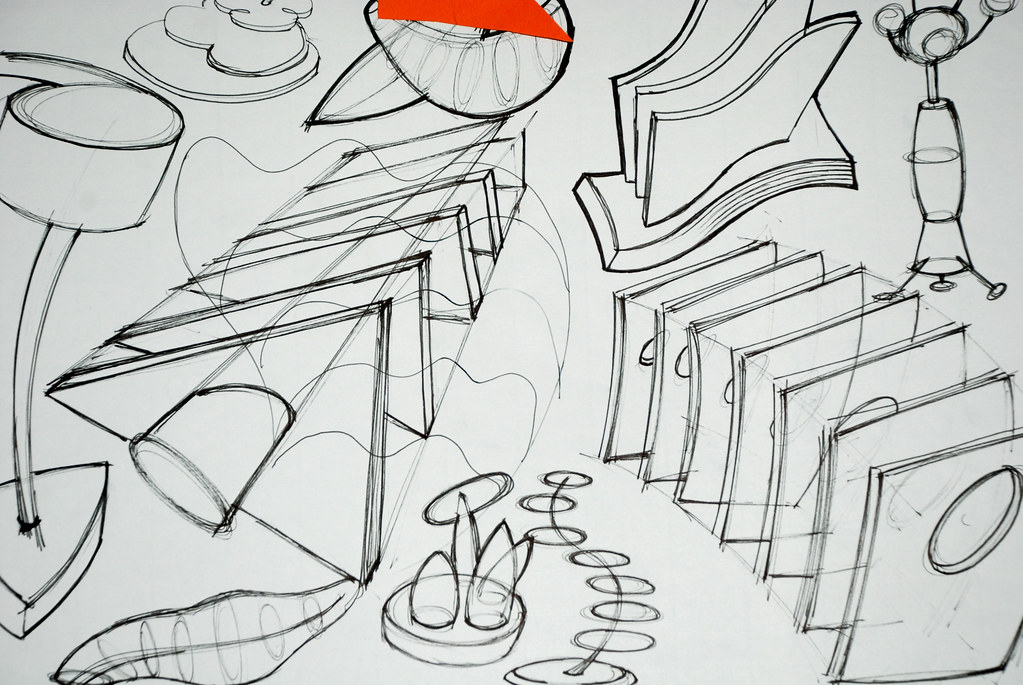Step into a world where perception is merely an illusion, and reality blurs with every pixel imagined. From mind-bending optical phenomena to awe-inspiring visual effects, the art of game design has unlocked a realm where players willingly surrender themselves to an alternate universe. In this wondrous realm, the mishmash of colors, shapes, and textures dance together, captivating our senses and pushing the boundaries of our imagination. Welcome to the enthralling realm of visual illusions and game design, where the harmony between artistry and technology holds the power to mesmerize players and shape their experiences like never before. Brace yourself as we embark on a captivating journey into the intricate relationship between visual effects and the mesmerizing tapestry of the player experience.
The Power of Illusion: Enhancing Player Engagement through Visual Effects
Unleashing the Magic: Captivating Players with Visual Wizardry
Prepare to be spellbound! In the enchanting world of gaming, visual effects have the remarkable ability to transport players beyond the realm of reality, immersing them in captivating experiences like never before. It’s no secret that the power of illusion lies in the hands of skilled game designers who harness the potential of these effects, bringing dreams and fantasies to life right before our very eyes.
- A feast for the senses: Imagine wandering through a mystical forest, its ethereal beauty illuminated by shimmering beams of sunlight. Or perhaps you find yourself in the heart of a raging battlefield, where explosions and lightning strikes ignite the screen with breathtaking intensity. Visual effects have the uncanny ability to evoke a myriad of emotions, from awe and wonder to fear and excitement, creating an immersive atmosphere that keeps players coming back for more.
- Stealing the show: When it comes to player engagement, the stage is set for visual effects to take center stage. From stunning particle effects that enhance the realism of combat, to dynamic lighting that sets the mood for an eerie adventure, these captivating visuals serve as crucial storytelling tools. They breathe life into worlds, characters, and narratives, capturing players’ attention and fostering a deep emotional connection that keeps them engaged in the gameplay for hours on end.
- Unleashing limitless creativity: With advancements in technology, game designers now have an unprecedented canvas on which to unleash their imagination and creativity. They have the power to craft breathtaking vistas and ethereal realms that were once unimaginable. Visual effects offer an endless array of possibilities, allowing designers to conjure up extraordinary experiences that leave players spellbound and eager for more fantastical adventures.
Beyond mere eye candy, visual effects have truly revolutionized the gaming landscape. As players, we can’t help but be captivated by their magic, as they sweep us away on extraordinary journeys, fueling our passion and engagement with every spellbinding moment.

Designing Visual Illusions: The Key to Immersive Game Experiences
When it comes to creating captivating game experiences, the art of designing visual illusions plays a crucial role. With the power to transport players to fantastical realms and heighten their engagement, visual illusions have become an indispensable tool in the hands of game developers. These illusions not only blur the line between reality and the virtual world but also push the boundaries of our perception, leaving players mesmerized and craving for more.
One of the most effective ways to achieve immersion is through the clever use of optical illusions. By leveraging techniques such as perspective distortion, motion blur, and color manipulation, game designers can trick the human eye into perceiving depth, speed, or even alternate realities that don’t exist. This strategic incorporation of visual tricks not only adds a layer of intrigue but also enhances the overall gaming experience, making it truly unforgettable. Whether it’s creating mind-bending mazes, mind-blowing stunts, or mind-boggling puzzles, visual illusions are the secret sauce that keeps players hooked, delivering a delightful escape from reality.
Harnessing the Visual Trickery: Techniques to Create Mesmerizing Game Environments
When it comes to creating mesmerizing game environments, harnessing the power of visual trickery is an essential technique for game developers. By strategically implementing various visual tricks, developers can transport players into captivating worlds that leave them spellbound. Here are some innovative techniques that can be employed to create truly immersive game environments:
- Forced Perspective: This age-old optical illusion can be employed to deceive players’ perception of depth and scale within the game. By manipulating objects’ size and placement, developers can create mind-bending scenes that appear larger or smaller than they actually are, resulting in visually stunning environments that defy logic.
- Anamorphic Projection: By utilizing anamorphic projections in game design, developers can distort or transform images and objects in a way that only becomes apparent when viewed from a specific angle or perspective. These mind-boggling distortions add an extra layer of intrigue, forcing players to carefully observe their surroundings and piece together hidden clues, making for an enthralling gaming experience.
These are just a couple of examples of the visual trickery techniques that game developers can leverage to create mesmerizing game environments. By skillfully implementing these techniques and exploring further innovations, developers can explore the frontiers of imagination and deliver gaming experiences that transport players into breathtaking worlds beyond their wildest dreams.
The Illusionary Arsenal: Leveraging Visual Effects to Amplify Player Satisfaction
Visual effects play a captivating role in the realm of gaming, acting as a powerful tool to enhance player satisfaction and immersion. By seamlessly weaving together a tapestry of illusionary elements, game developers can transport players to fantastical realms, elevating their gaming experience to unprecedented heights.
One of the key benefits of leveraging visual effects is the ability to create stunningly realistic environments that seem to come alive. From lush, vibrant landscapes with cascading waterfalls to post-apocalyptic wastelands engulfed in swirling smoke and debris, visual effects breathe life into the game world, making it feel tangible and truly immersive. By meticulously crafting every detail, such as dynamic lighting, particle effects, and weather simulations, developers can conjure a sense of awe that captivates players from the very first frame.
The Conclusion
In the captivating realm of video games, where reality intertwines seamlessly with imagination, visual illusions have emerged as virtuosos of the digital landscape. As we dive deeper into the vast depths of game design, it becomes evident that these visual effects hold extraordinary power, manipulating our senses and enthralling our minds. From the mesmerizing mirages that blur the boundaries of perception to the beguiling distortions that challenge our understanding of space, these illusions have taken the player experience to unprecedented heights.
Through the skillful mastery of visual effects, game designers have crafted unforgettable worlds where reality and illusion coexist, inviting players to revel in the sublime artistry of their creations. These illusions, like mischievous specters, dance effortlessly across our screens, breathing life into pixels, and unraveling impossibilities before our very eyes. They enchant us with the allure of impossible architectures, where gravity defies its earthly chains and landscapes contort into intricate mazes, beckoning us to explore their confounding depths.
Beyond mere spectacle, visual illusions within game design possess a profound ability to imbue our virtual experiences with a touch of magic, transmuting the mundane and mundane into extraordinary spectacles. Delicately crafted illusions of speed and motion infuse thrilling adrenaline into our veins, propelling us through races or battles, as though we ourselves have become the embodiment of lightning. Shimmering illusions of light and shadow lend an ethereal aura to the darkest dungeons, casting an otherworldly enchantment upon our quest for glory.
Yet, hidden beneath the glitz and glamour, the impact of visual illusions on the player experience runs deeper than mere superficiality. These captivating tricks of the eye hold immense potential to shape our thoughts and emotions, provoking profound introspection as we navigate through these digital realms. Ephemeral illusions of danger and suspense tap into the primal recesses of our beings, igniting a primal instinct for survival that propels us forward, ever vigilant.
Even as the final credits roll and reality gently tugs us back from these magical realms, the impression of visual illusions lingers, remaining etched within the realms of our imagination. Game design has been forever elevated, brought to new heights by the masterful integration of visual illusions that captivate, challenge, and ignite our senses. Truly, the artistry of these illusions is the invisible puppeteer, guiding our every step, shaping our every emotion, and forever intertwining the realms of dreams and reality within the infinite canvas of game design.
So next time you find yourself wielding a controller or mouse, embarking on yet another virtual adventure, take a moment to appreciate the intricate tapestry of visual illusions that weaves your experience together. Allow yourself to become lost in the swirling vortex of wonder they evoke, for there, amidst the matrix of pixels and polygons, lies a magic waiting to be unraveled, an enchantment awaiting to be discovered. The power of visual illusions in game design is unfathomable, and in their ethereal embrace, the possibilities truly become endless.
The game industry is no stranger to the effects that visual illusions and game design have on the player experience. This relationship is both complex and dynamic, as developers strive to create an immersive and satisfying experience for players by leveraging the power of visual illusions to manipulate perceptions and create a unique gaming experience.
Visual illusions are based on the concept of cognitive illusions, or a diversion of attention away from the true nature of a perceived object. In the context of game design, this is used to create a richer experience for the player, making use of a variety of visual tricks. This includes the use of optical illusions, which are based on the idea of distorted objects or light sources in order to create an effect on the perception of the player. Optical illusions may be used to create a sense of depth or movement, as well as to heighten levels of suspense and surprise.
Another type of visual illusion used in game design is called apparent motion. This illusion takes existing objects and manipulates them in such a way that creates the impression of motion or movement. Apparent motion is commonly used in video games to create a sense of flow and continuity, to indicate a game space that is still accessible to the player, and to create dynamic environments.
In addition to the use of perceptual illusions, game designers also make use of structural illusions. These involve changes in the spatial or physical structure of the game, such as the use of multiple levels or the addition of complexity to puzzles. This type of illusion can be used to add challenge and depth to a game, or to create an environment that players must explore and interact with in order to progress.
Visual illusions and game design are undeniably intertwined, and can have a profound impact on the overall experience of the player. Each type of illusion plays its own part in making a game compelling and enjoyable, ensuring that players are consistently enthralled by the virtual landscapes and experiences that developers and designers provide. By leveraging the power of illusions, developers can create a unique and engaging gameplay experience.



